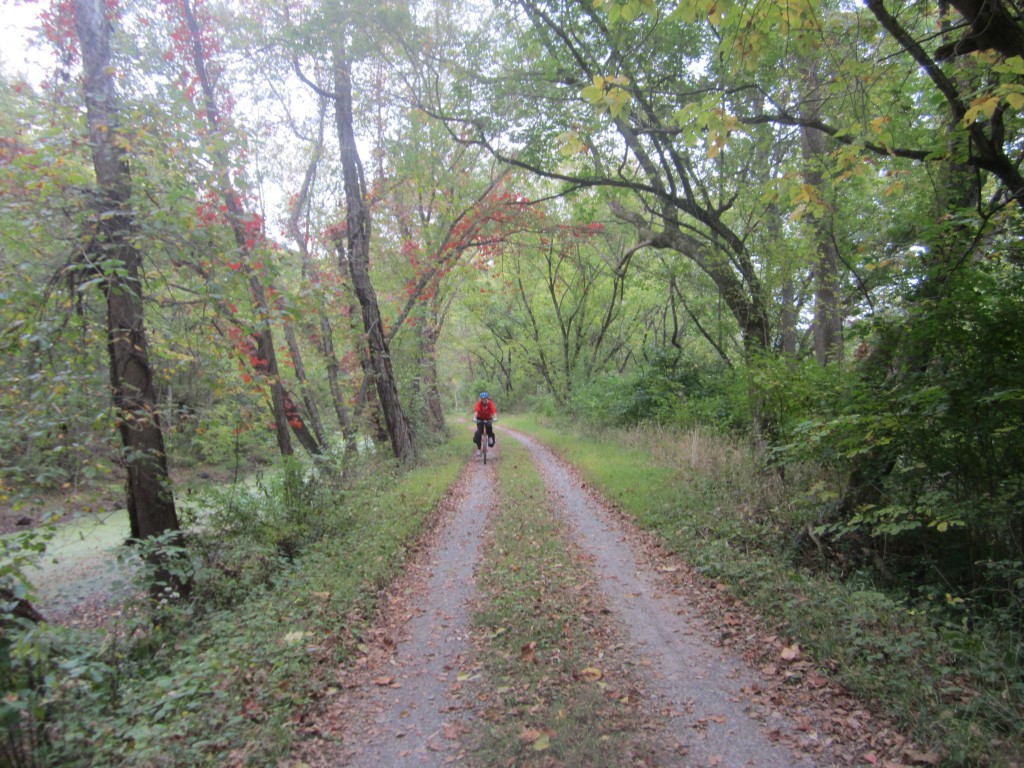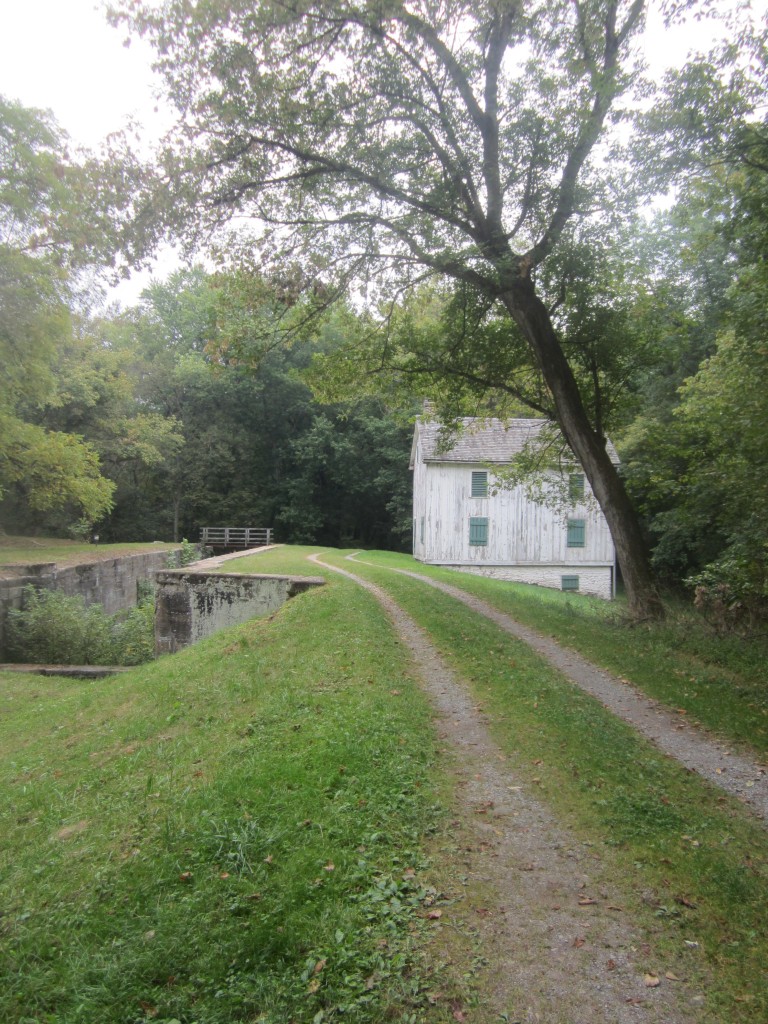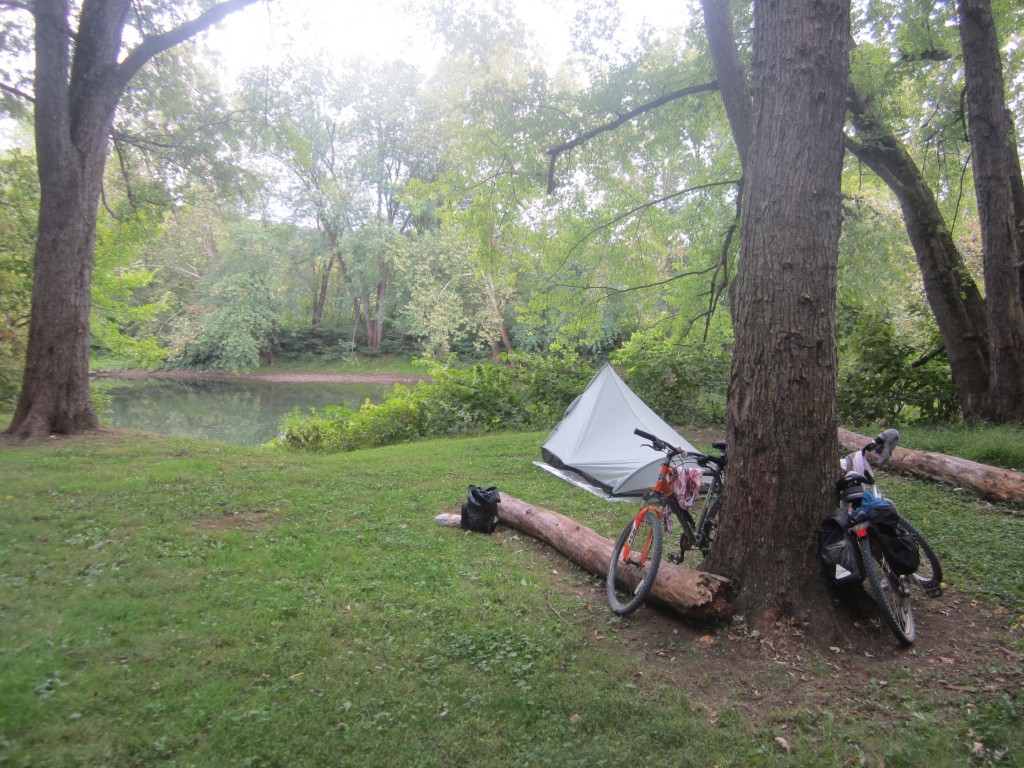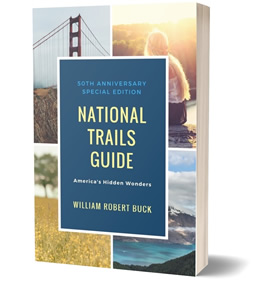The Potomac Heritage Trail is one of the 11 National Scenic Trails and follows the Potomac River through the Nation’s Capital. The trail’s 1,100 miles include the Chesapeake and Ohio Canal (C&O) — its geographical heart. You can experience this route on foot, by bike, horseback or watercraft. Karen is a retired teacher who biked the 184-mile C&O section of the trail.
When did you become interested in biking the C&O?
I discovered the C&O in 2008, while hiking the Appalachian Trail and vowed to return someday when I had completed the AT.
What were some of the historical items you learned about?
It was very interesting to see how freight was moved in the 1800’s before the railroad arrived. Along the way we toured Fort Frederick that had a part in the French and Indian, Revolutionary and Civil Wars. There were many informative signs along the way at historic points of interest including: a cement mill which supplied the cement for the US Capitol and the Washington Monument, a cave where local residents hid during the battle of Antietam and the spot along the Potomac where Gen. Lee and the Confederate Army was trapped for a week while retreating from Gettysburg. We also passed dam #5 on the Potomac that Stonewall Jackson’s confederates tried to destroy to prevent supplies, transported on the canal from reaching the Union Army. He was unsuccessful. This was a pedaling history lesson.
Are there other highlights of the trail you’d like to share?
Retracing the few miles which I had walked while doing the Appalachian Trail, staying in the lockhouses on the cold blustery spring nights, viewing the Falls of the Potomac, seeing all the turtles, camping at the scenic hiker/biker campsites, having my bike carry all my gear, riding along the brand new slackwater section of trail just above water level on the Potomac and traveling through the .7 mile Paw Paw tunnel to just name a few.
How did you manage the logistics of bike transport?
Living on the west coast was not the most convenient location for bike transport. After a bit of research, I realized that it would cost more to ship my bike than buy one on the east coast. For several weeks before my trip I scoured Craigslist and made a list of bikes to look at when I arrived. It was snowing on the day in March when I drove around looking at the bikes on my list. I bought the third one I tried out for $200, a relatively new, low end Trek Mountain bike which would be fine for the towpath. My friend and biking companion Catherine did the same. She lives on the east coast so storage won’t be an issue. Since neither of us had ever done an overnight on a bicycle, we first wanted to sample the C&O. So we did the C&O in two sections. In the spring, we went from Georgetown to Harpers Ferry, WV, and in the fall, from Harpers Ferry to Cumberland, MD.
How long did the trip take and where did you sleep?
We pedaled seven days on the towpath, three in March and four in September. We had originally planned to camp out each night, but with the late winter storm in March we elected to stay in the refurbished lockhouses. The C&O Canal Trust has rebuilt four lockhouses where for a fee, travelers may experience life as it was in the 1800’s. We spent our two nights out in lockhouses #22 and #28 which were about 30 miles apart. Then in September the weather was delightful and we spent our three nights out in the hiker/biker campsites provided free of charge. Each site has several grassy tentsites, a privy, a picnic table, a long handled water pump and a fire ring. All of the campsites we chose were right on the banks of the Potomac.
What types of wildlife did you see on this trip?
We saw dozens of moss covered turtles in the canal, two muskrats, one very long black/rat snake, dozens of deer some with blond fawns, wild turkeys, wood ducks and mallards, several plump frogs and dozens of Canada geese.
What were the advantages/disadvantages through urban areas?
Advantages: it was never hard to find water, there were food establishments nearby if you wanted to leave the path for a meal, it was very close to the Amtrak stations. Disadvantages: On our first day out of Georgetown, the path was actually crowded. Some folks don’t know to keep right when sharing the path. Our second night in the hiker/biker campsite was fairly close to Interstate 70, earplugs were helpful.
Have you been on any other National Trails?
I’ve finished the Appalachian Trail, started on the Pacific Crest Trail last year and have wandered 900 miles on it, put in a few miles on the Florida Trail and a few others, but the AT is still my favorite.
Karen has also been section biking the Arizona Trail. See more photos and read about her latest adventures at www.trailjournals.com (posting under her trail name – Whisper).




